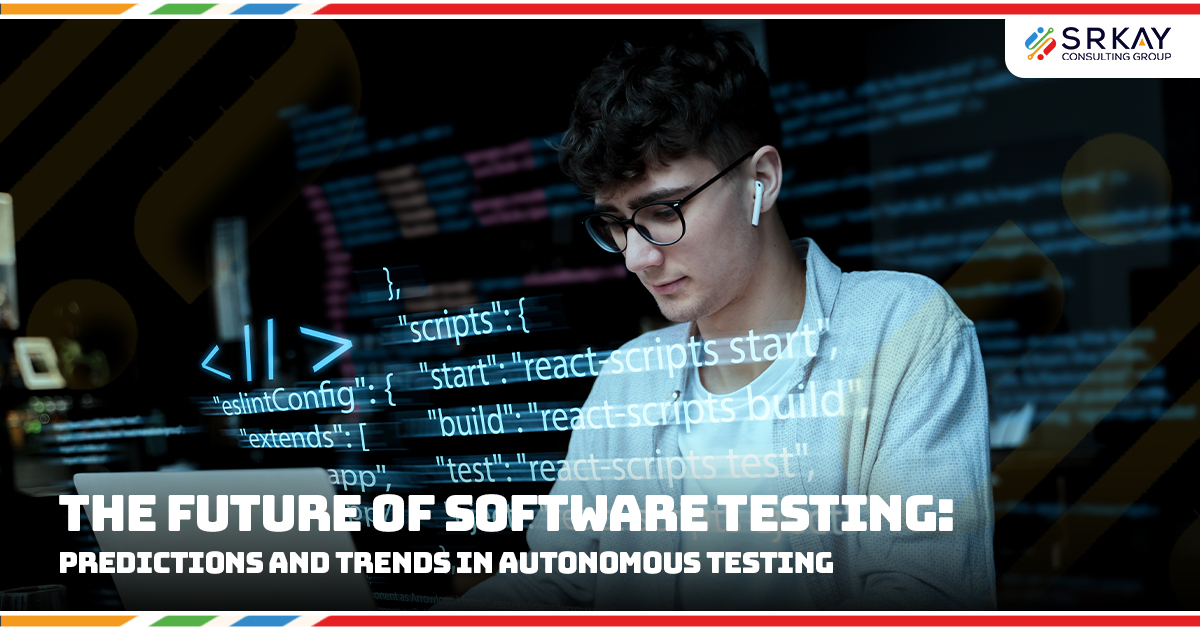The Future of Software Testing: Predictions and Trends in Autonomous Testing

As the digital world relentlessly evolves, the domain of software testing is not just keeping pace but leading some of the most groundbreaking changes in the realm of technology development. The future of software testing, deeply intertwined with advancements in AI and ML, is reshaping what it means to ensure software quality. This article explores these trends, their implications, and the exciting possibilities they bring to the field.
The Evolution to Autonomous Testing
Software testing has evolved from manual efforts to automated scripts, but the future lies in autonomous testing. This era is looking at systems that can learn for themselves and even change over time to provide much more than manual or conventionally automated modes of testing could. With the complex and dynamically changing software environment, autonomous testing systems analyse data, predict the likely problems that may occur, and dynamically adjust their testing strategies. Therefore, they are quite important.
AI and ML: The Backbone of Modern Testing
Artificial intelligence has emerged as the pillar of modern testing. This technology provides tools with the capability of analysing large data sets, helping them to automatically create and execute test cases, and also to predict potential issues before they occur. This greatly enhances the precision and velocity of all processes that are test-related, hence going from hardworking methods to way smarter, more productive practices.
The Role of Cloud Infrastructure and Continuous Testing
Cloud infrastructure is now a pivotal element in software testing, offering scalability and flexibility previously unattainable. This shift is not just about technology but a complete rethinking of resource allocation and cost management. Cloud infrastructure facilitates continuous testing, which integrates seamlessly with CI/CD pipelines to enable real-time feedback and quicker, more effective release cycles.
Balancing Automation with Human Insight
While autonomous testing and AI bring remarkable efficiencies, they do not eliminate the need for human oversight. Complex testing scenarios often require the nuanced understanding that only human testers can provide. Therefore, striking the right balance between automation and manual testing is critical for achieving optimal testing outcomes.
Emerging Trends: Scriptless Testing and Crowdsourcing
Two emerging trends in software testing are scriptless automation and crowdsourcing. Scriptless testing simplifies the automation process, making it accessible to a broader range of project stakeholders. Crowdsourced testing, meanwhile, offers scalability and diversity, crucial for applications targeting wide and varied audiences. These trends represent a democratisation of testing processes, where expertise is distributed and more inclusive.
The Challenge of Implementing AI in Testing
Implementing AI in software testing is not without challenges. The complexity of AI-based systems and the need for substantial initial investments can be daunting. Additionally, ensuring that these systems are aligned with the specific needs of a project requires careful planning and expertise.
AI-Powered Testing: Methods and Applications
AI in software testing is not a monolithic concept but encompasses various methods and applications. Regression suite automation, defect analysis, prediction, and self-healing automation are just a few examples. These methods aim to reduce manual effort, increase the accuracy of defect identification, and enhance the overall efficiency of the testing process.
Preparing for the Future: Skills and Mindset
As we move into this new era of software testing, the skills and mindset of testing professionals need to evolve. Understanding AI and ML, cloud technologies, and the nuances of advanced testing methodologies will be crucial. Moreover, professionals must adapt to a more collaborative, agile testing environment where communication between developers and testers is key to success.
Conclusion: Embracing the Future of Software Testing
In conclusion, the future of software testing, heavily influenced by AI and ML, is not just a technological evolution but a paradigm shift in how we approach quality assurance in software development. As these technologies continue to mature, they will undoubtedly unlock new potential and pave the way for more innovative, efficient, and effective testing methodologies.




